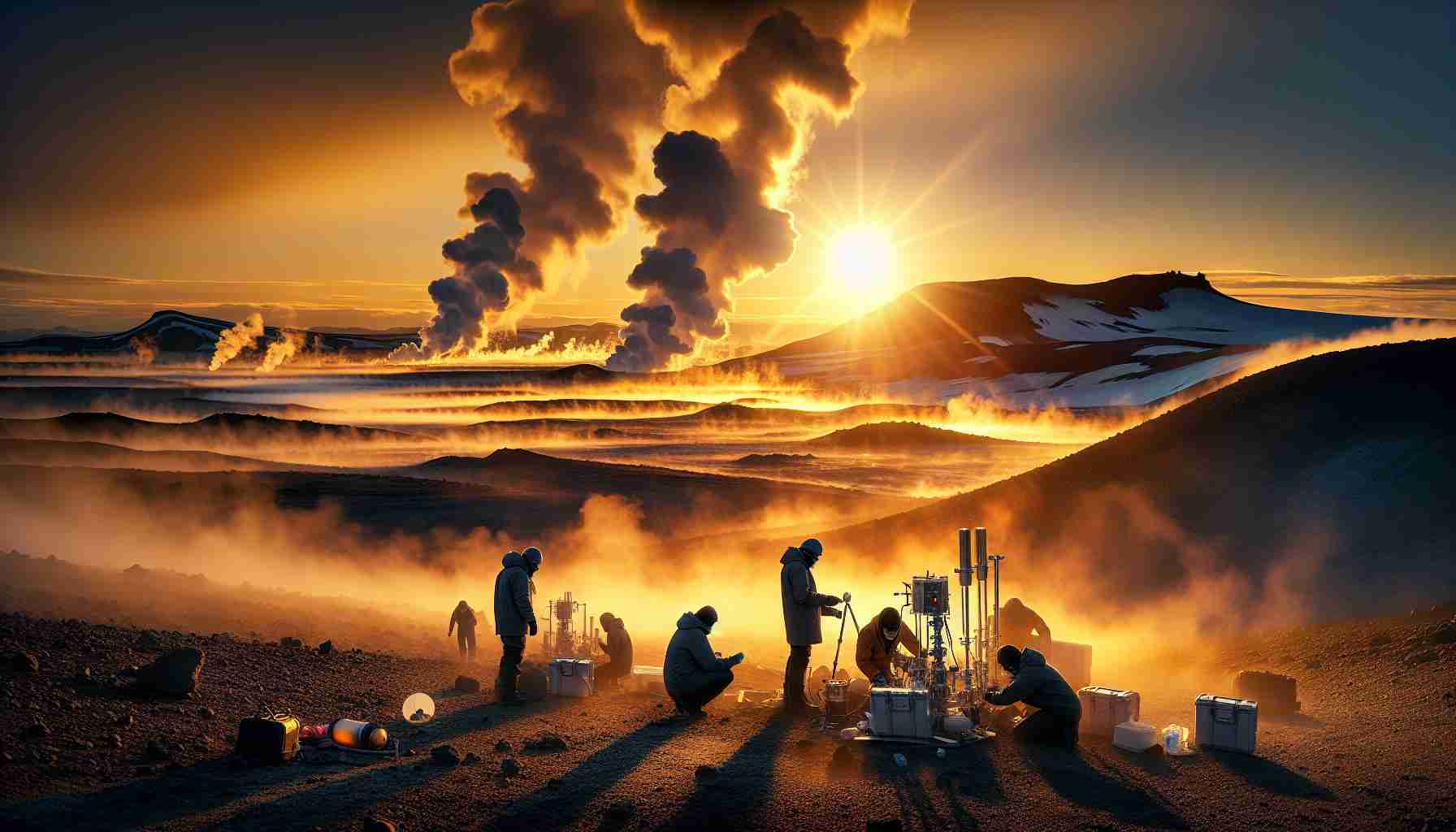An innovative global team of researchers is preparing for an extraordinary geological endeavor focused on Iceland’s Krafla volcano. This project, termed the Krafla Magma Testbed (KMT), is aimed at harnessing the molten rock beneath the surface, tapping into an unprecedented source of renewable geothermal energy. With Krafla’s notable history of over 30 eruptions in the last millennium, the initiative presents a prime chance to explore magma’s powerful potential.
Scheduled to initiate drilling in 2027, KMT plans to create a subterranean observatory that will delve about 1.2 miles deep. This groundbreaking venture seeks to unravel the mysteries of magma dynamics by deploying sensors to monitor temperature and pressure in this extreme environment. Leading magmatic experts believe such research could revolutionize our comprehension of volcanic systems.
The second borehole will showcase a test site for pioneering geothermal power facilities capitalizing on magma’s extreme heat. With Iceland already sourcing a significant portion of its energy from geothermal methods, the KMT seeks to enhance this further. The Krafla power facility, which currently benefits 30,000 households, sits on a magma reservoir boasting temperatures of 500-600°C.
While drilling into active volcanoes presents challenges, experts emphasize the comprehensive safety measures in place. The KMT project may not only elevate the geothermal energy sector but also serve as a crucial step in reducing our dependency on fossil fuels, contributing significantly to efforts against climate change.
FAQ Section
What is the Krafla Magma Testbed (KMT)?
The Krafla Magma Testbed (KMT) is an innovative geological project focused on harnessing geothermal energy from the molten rock beneath the Krafla volcano in Iceland. It aims to conduct research on magma dynamics and develop advanced geothermal power facilities.
When is the KMT project scheduled to begin drilling?
Drilling for the KMT project is scheduled to begin in 2027.
How deep will the drilling go?
The project aims to create a subterranean observatory that will delve approximately 1.2 miles deep into the Earth’s crust.
What is the significance of Krafla’s volcanic history?
Krafla has experienced over 30 eruptions in the last millennium, making it a prime location for studying magma and volcanic systems, providing a unique opportunity to explore renewable geothermal energy potential.
What technologies will be utilized in the KMT project?
The project will deploy sensors to monitor temperature and pressure in the extreme environments surrounding magma, which is crucial for understanding volcanic systems.
What is the temperature range of the magma reservoir at Krafla?
The magma reservoir at Krafla boasts temperatures ranging from 500 to 600°C.
How does the KMT project relate to renewable energy efforts in Iceland?
Iceland already utilizes a significant portion of its energy from geothermal sources. The KMT project aims to further enhance this energy production, contributing to the reduction of fossil fuel dependency and efforts against climate change.
What safety measures are in place for the KMT project?
Experts emphasize that comprehensive safety measures will be implemented to address the challenges associated with drilling into active volcanoes, ensuring a secure research environment.
Key Terms and Definitions
– Geothermal Energy: A renewable energy source derived from the Earth’s internal heat.
– Magma: Molten rock found beneath the Earth’s surface, which can provide high temperatures for energy extraction.
– Subterranean Observatory: A facility designed to conduct research below the Earth’s surface, often equipped with various sensors for monitoring environmental conditions.
Suggested Related Links
Geothermal Resources Council
NASA Earth Observatory
Visit Iceland
